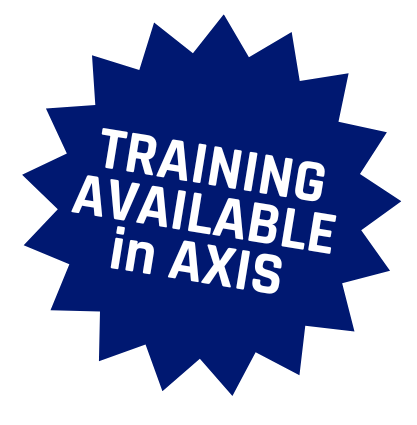Ratios
Implementation date 01 June 2024
What are Supervisory Ratios?
Supervisory Ratios refer to the required number of adult leaders needed to effectively supervise a group of cadets. It's a fundamental element in youth-service organizations to foster environments where young people can thrive, learn, and grow with confidence.
Why is it Important?
Ensuring appropriate supervisory ratios is not just about compliance with industry standards; it's about prioritizing the safety and development of every cadet. By maintaining proper ratios, we can:
-
Enhance Safety: Quick responses to emergencies and proactive accident prevention.
-
Improve Supervision: Foster positive behaviors and meaningful engagement.
-
Support Development: Provide personalized attention and nurture individual growth.
Join the Training!
Ready to take your commitment to youth safety and support to the next level? We invite you to participate in our Supervisory Ratios training, available in AXIS. This training equips you with the knowledge and skills to carry out the new ratio standards.
Search the Course Catalog for: Supervisory Ratios - A Cadet Protection Update.
Supervisory Ratios Calculator
Frequently Asked Questions
What about O-flights? My cadets go on 1:1 O-flights all the time.
This new ICL amends CAPR 60-2 section 2.6, with additional information, but does not negate the three exemptions stated: 2.6.4. Two-Deep Leadership. CAP’s general policy is that every cadet activity must be supervised by at least two adult leaders who are in “Approved” status in eServices (see CAPR 39-2, Civil Air Patrol Membership). CPP training materials explain how that principle is put into practice. There are three exceptions to the “two deep leadership” rule: 2.6.4.1. cadet flying, explained in 2.10 (flight instruction) and 2.12.1 (orientation flights); 2.6.4.2. real-world operational missions (not training) conducted under CAPR 60-3, CAP Emergency Services Training and Operational Missions; and 2.6.4.3. chance encounters, prior relationships, professional relationships, membership in other organizations, and children’s friends, as explained in 2.13.3.Cadet o-flights are an exception to the ratios, which are primarily for routine and special activities like encampment, NCSAs, etc.
Since my squadron meets in several rooms at the same time, do I need to supply at least 2 seniors in each room?
You do not need to provide 2 seniors per classroom, as the supervisory ratios ".... establish the minimum number of adult leaders on-site who are screened, are current in the Cadet Protection Training, and available to respond promptly in an emergency. Restated, the ratio standards govern activity staffing in the aggregate." If you have more than 30 cadets, you would need more than 2 senior members overall, but not in each room. Line of sight supervision is not required, it is more so the ability to respond in an emergency.
What about transportation?
While transporting cadets, the rule of 3 applies, meaning it is acceptable to have 1 senior member (screened and trained and active in eServices) driving 2 or more cadets. Once you arrive at your destination, say a trip to the movies or local airshow, the ratios for routine activities would apply.
There was a mention of ratios of 1:12 and 1:15 and special ratios in specific circumstances. Should those ratios be 2:12 and 2:15?
In short, two-deep leadership and 1:15 (for a routine event) ratio are required, as the 2-deep minimum must be met. This actually makes things simpler for members when large groups are involved, as you must have a minimum of 2-deep leadership at all times, but the overall ratio is 1:15, for routine activities. For example, if you are taking 45 cadets to a museum or short day activity that isn't an HAA, you only need 3 senior members (45 cadets / 15 = 3 senior members), whereas a 2:15 ratio would require 6 senior members at the same activity I used in my example.
I have a new squadron that has three cadets (2 males and 1 female) attending a RCLS, which will require an overnight stay along the way. How many senior members are required to drive/ attend? How does the 2 deep or 15:1 ratio work for smaller squadrons who utilize smaller CAP vehicles and have limited seats available?
Thanks so much for your question! For your overnight trip to RCLS, you need a minimum of 2 senior members to travel with the small group of 3 cadets. Given that overnight accommodations in a hotel might be costly for this small group (since senior members and cadets shouldn't share close quarters like a hotel or dorm, and all parties should be separated by gender), would the group be able to camp at a KOA, or something similar? Then everyone could have their own tent (or the 2 male cadets could share), and it wouldn't break the bank like multiple hotel rooms might. In regards to transportation, the new ICL does not impact the current transportation rule of three, meaning that 1 senior member (who is screened & trained, and active in eServices) can drive 2 cadets (or more), and be in compliance with our Cadet Protection Policy.
How Did we Decide This?
In March of 2023 CAP contracted Praesidium, Inc. to conduct a comprehensive systems review of our Cadet Protection policies, procedures and training.
Praesidium is an expert in helping youth development organizations with abuse prevention. Their evaluation of our methods was comprehensive and included an extensive review of our policies, regulations, pamphlets, and training materials from across the organization. Additionally, their analysts conducted interviews with key stakeholders from across the organization, including volunteers at varying levels, employees, Board of Governors and CAP-USAF.
The recommendations from Praesidium came to us in an extensive report and analysis. The recommendations were then reviewed by the Cadet Protection Task Force, comprised of key stakeholders within the organization, including volunteers and employees from Cadet Programs, Membership, Safety, the Command Team, the Board of Governors, and CAP-USAF. Each recommendation was evaluated and thoroughly discussed by the task force and an implementation strategy was determined. The first item to go into effect is Cadet-to-Adult Leader Ratios.




